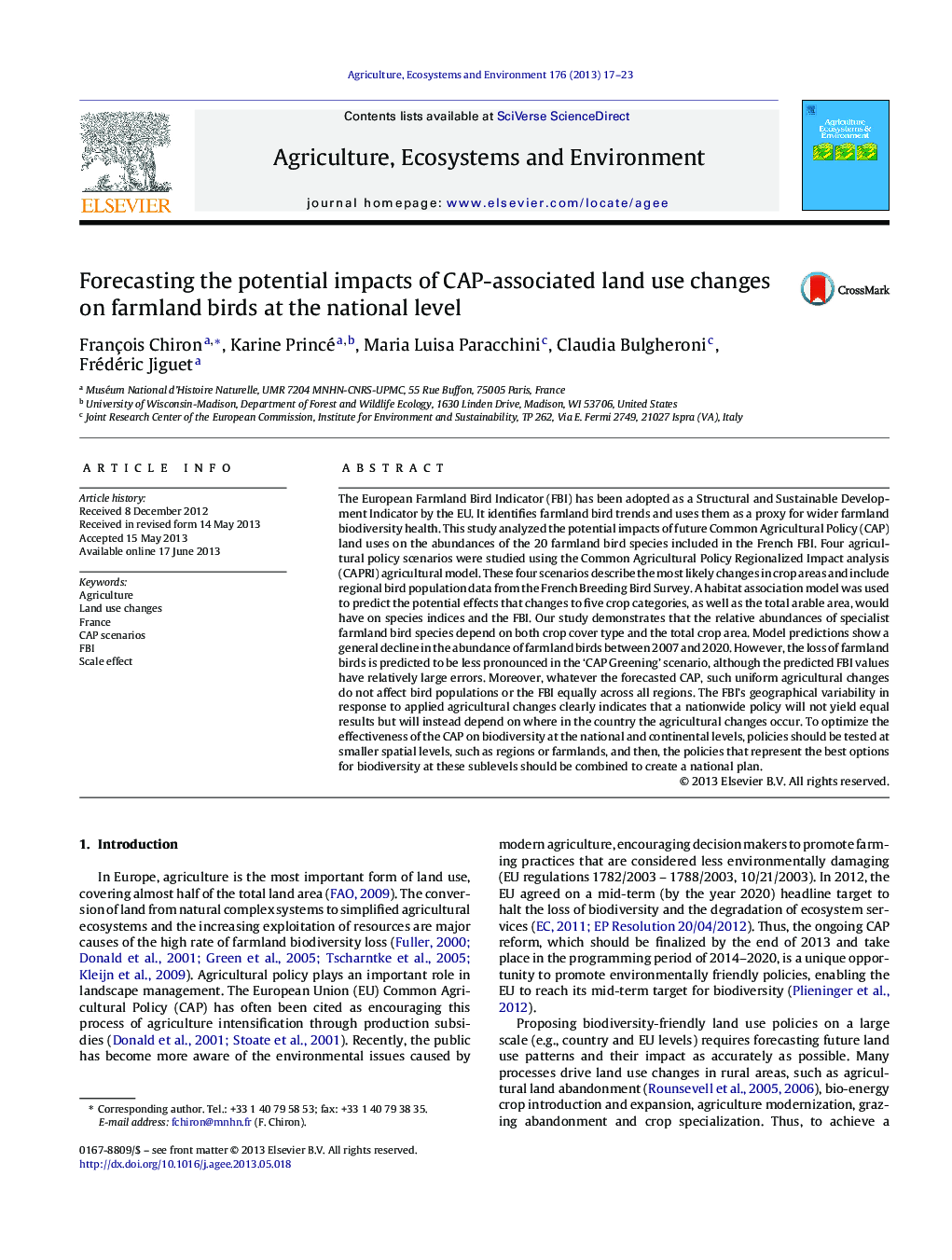| Article ID | Journal | Published Year | Pages | File Type |
|---|---|---|---|---|
| 2414246 | Agriculture, Ecosystems & Environment | 2013 | 7 Pages |
•Farmland birds are predicted to decrease less under the ‘CAP Greening’ scenario.•CAP must account for scale dependency in the FBI's response to land use changes.•Regionalization of CAP may improve the efficiency of policies at national level.
The European Farmland Bird Indicator (FBI) has been adopted as a Structural and Sustainable Development Indicator by the EU. It identifies farmland bird trends and uses them as a proxy for wider farmland biodiversity health. This study analyzed the potential impacts of future Common Agricultural Policy (CAP) land uses on the abundances of the 20 farmland bird species included in the French FBI. Four agricultural policy scenarios were studied using the Common Agricultural Policy Regionalized Impact analysis (CAPRI) agricultural model. These four scenarios describe the most likely changes in crop areas and include regional bird population data from the French Breeding Bird Survey. A habitat association model was used to predict the potential effects that changes to five crop categories, as well as the total arable area, would have on species indices and the FBI. Our study demonstrates that the relative abundances of specialist farmland bird species depend on both crop cover type and the total crop area. Model predictions show a general decline in the abundance of farmland birds between 2007 and 2020. However, the loss of farmland birds is predicted to be less pronounced in the ‘CAP Greening’ scenario, although the predicted FBI values have relatively large errors. Moreover, whatever the forecasted CAP, such uniform agricultural changes do not affect bird populations or the FBI equally across all regions. The FBI's geographical variability in response to applied agricultural changes clearly indicates that a nationwide policy will not yield equal results but will instead depend on where in the country the agricultural changes occur. To optimize the effectiveness of the CAP on biodiversity at the national and continental levels, policies should be tested at smaller spatial levels, such as regions or farmlands, and then, the policies that represent the best options for biodiversity at these sublevels should be combined to create a national plan.
